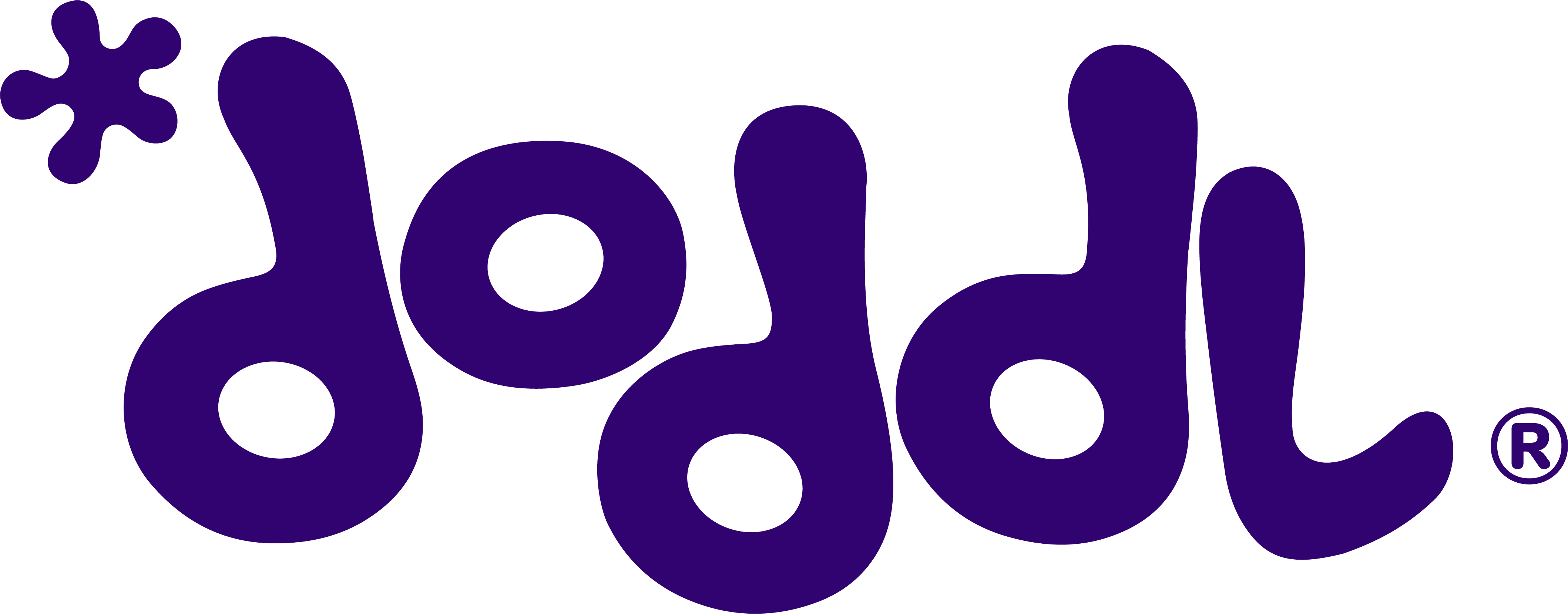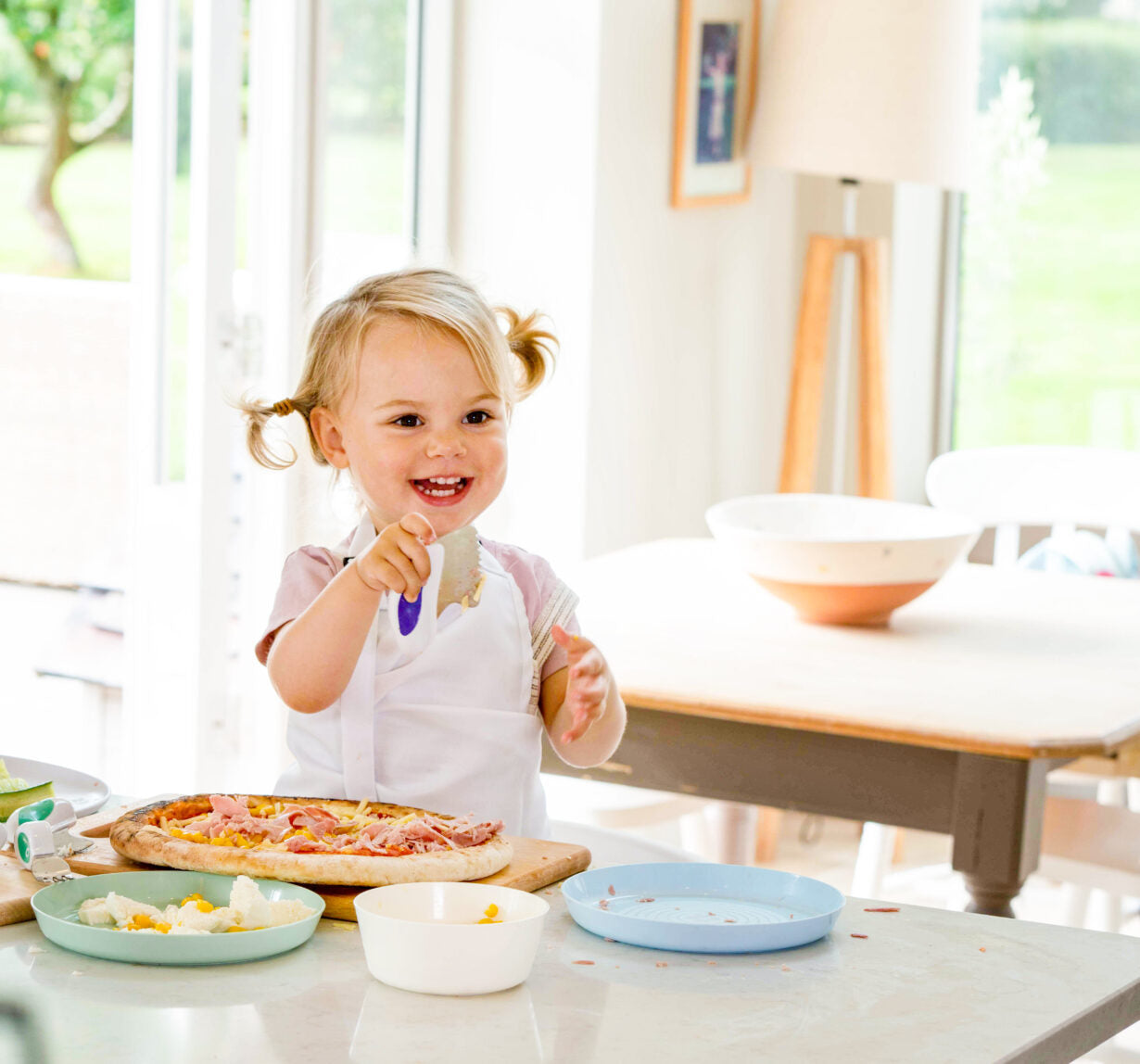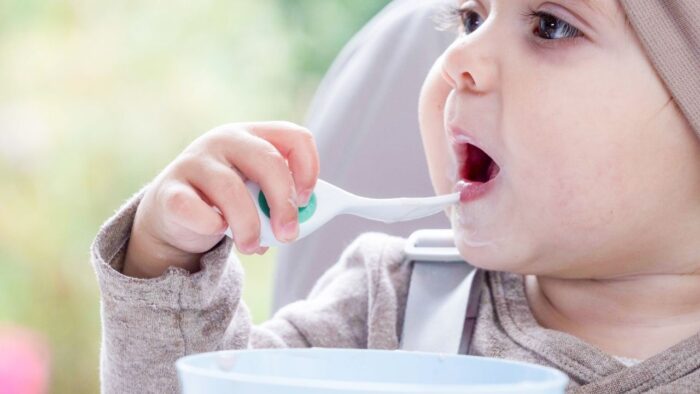At what age should your toddler be able to use a knife?
Parents often ask us about when they should think about introducing a toddler knife. And our answer is usually in line with that familiar response for most child-related questions like this. In other words, "You know your child better than anyone else". That being said, there are some things to consider - when, how and what kind of children's knife you introduce.
How to teach a toddler to use a toddler fork and toddler spoon
Getting your toddler familiar with a child's fork and spoon first is a good starting point. Once they’ve mastered this, it’s a good indication they have developed some coordination and control and are ready for the next challenge. The knife. But first, let’s take a step back and make the first part (the spoon and fork learning) as easy as possible. Choosing the right kind of toddler cutlery for 1-5 year olds. It sounds obvious but it’s a vital part of making it as easy as possible for your toddler to learn how to use cutlery. This is where doddl toddler cutlery can really help.
Which cutlery should a toddler use?
If you haven’t seen doddl or heard about it yet, you’re in for a treat. Every part of doddl children's cutlery has been designed specifically for young children, to make learning how to use cutlery… a doddl. Designed with child development experts, the handles of the doddl spoon and fork are contoured to make it comfortable for your child to grip, and short to make it easy to control.
What makes the doddl toddler spoon and doddl toddler fork different?


When you think about it, it’s logical really. The shorter the distance from the end of the spoon (where the food is) to the mouth, the easier it is for the food to make it to its destination successfully. More eating, less mess. The soft touch areas on either side of the handle encourage children to open up their fingers and pinch the cutlery, helping to develop their pincer grip. You can find out more about how little hands develop here. And if you’re looking for some steps to help guide you on your cutlery journey, have a look at this simple ‘mealtime milestones’ guide. Then, once your little one is well on their way to fork and spoon mastery you can start thinking about the all-important question - introducing the toddler knife.
What kind of knife you should be introducing to your toddler?
Most children’s knives are two things. Slim handled and blunt. When you really think about it, most children’s cutlery is simply just a small version of cutlery that is shaped and styled for adults. They are designed to rely on strength and coordination that young children haven't developed yet. Then there’s the bluntness – what a challenging combination. Virtually impossible to use and completely ineffective.
Introducing the doddl knife
If you haven’t been introduced yet, you’re in for a treat. We love the doddl toddler knife, we genuinely do. Alongside the rest of our baby and children's cutlery, we spent months with experts perfecting the design to make it really easy for children to use. At first glance as many lovely people point out, our toddler knife doesn't look like a 'standard' knife (very true) but that's because it isn't.

What makes the doddl knife different? We threw away the designs of long handled cutlery because quite honestly they're rubbish (as outlined above) and they just don’t help children. Then, because they don’t work, they become one of the reasons your child gives up on using cutlery. Cutlery that doesn't work means they can get cross and loudly frustrated at mealtimes. And also why they end up with food down their fronts as they slip their knife across the plate...
Developing hands
One of the main issues with traditional long, slim handled knives is the reliance they have on fully developed wrist muscles. Think about it the next time you chop. You hold that long slim handle and you 'saw' it back and forth, tensing your wrist as you go. That 'tensing' stops your wrist from ‘breaking’ and slipping downwards It gives you control and allows you to put pressure on the top of the knife to chop through your intended item. For a toddler, because their wrist muscles aren’t yet fully developed, it’s more like trying to make cooked spaghetti hold firm. It won’t. That’s why the wrist flops and the knife slides across the plate (taking the food with it, onto the table and the floor). You can read more about how little hands develop here
Making it easy to use a toddler knife
So, for us, designing the perfect toddler knife had 3 key critical factors.
- It should make it easy for a young child to use it successfully, while they are developing. In other words they don't need to already have the skills in order to use it successfully.
- It had to be completely safe.. it should help toddlers easily transition to an adult knife when they are ready (who wants to teach them ‘how to’ twice when you don’t need to.)
The handle of the doddl knife.
This is really what makes the doddl knife look very different. And it’s one of the main reasons the doddl knife is so easy to use. It sits in the hand, making it easy for a child to use the strength in their palm to push down through food. Also meaning there is no more reliance on those weak wrist muscles. This gives them more control and ultimately much greater success.
Of course, with a child's knife, it's safety first.
Now, we all want to keep our little ones safe, but a blunt knife makes chopping, well, pointless (excuse the pun) and teaches your child nothing at all. The doddl childrens' knife is, thankfully, different. No long handles here. Young children can instead use the strength in their palms to push down through food. The doddl blade on our toddler knife is very cleverly designed and serrated in unique way. This means your little one can chop successfully to their heart's content, without any danger to themselves whatsoever. And (as if you need more) they will intuitively hold the doddl toddler knife as they will hold an adult knife. So not only is it effective for them to use now, but also makes it easy to transition when they're ready.
Teaching your toddler to use adult cutlery
Acquiring any new skill takes time investment and (when you’re a parent) a whole lot of patience. As parents ourselves, we know the last thing you want to do (ideally) is to have to teach something twice. So, we made sure the design of the knife means your little one learns how to hold an adult knife ‘correctly’. It’s the clever placement of the soft touch areas and the shape that holds their hand in the correct position. But with a design that means they can use it successfully right here and now.

What does independent chopping for your toddler actually mean?
A lot of positives. It means that your little one can feel proud of the independence they are building at mealtimes when they can chop up their own food successfully. Not only that, independent chopping means your little one is developing a new skill. And it means that you can eat your food while it’s hot (seriously!). It also means that you and your little person can take delicious recipes (some great toddler recipes) and get in the kitchen together – woop! There’s a ton of benefits in cooking together. From developing language skills through describing the food, talking about colours and shapes and introducing the basic concept of maths. And if you're looking for some other suggestions of how to keep your little one busy in the kitchen.
How to teach your child to use a knife
Remember this is a new skill for your little one, so you need to allocate some time to help them learn. Choose a time that makes sense to you (so maybe not at mealtimes when things can be a bit more hectic and everyone is hungry!).
- Firstly, show your toddler how you chop with the doddl children's knife. Children love to mimic and seeing how you do it will really help.
- Gently help guide their hand as it holds the knife and show them how to push down through the food. Start slowly, asking your toddler to chop soft play dough or a banana.
3. Then let them have a go themselves, with something easy like a mushroom for example.
4. Next step? Move on to pre-cut foods and ask for smaller pieces. You can chop a cucumber or a softened carrot into a strip so it’s easy for them to grip the end. Ask them to chop away.5. Their skills and ability will develop every time they use the knife. Soon they'll be chopping all sorts of different foods and feeling very proud of themselves!
6. Finally at mealtimes, try asking them to chop certain things on their plate - so they don't feel they're expected to chop up everything at the start. And obviously plenty of cheering when they try! Then, practice makes perfect, so keep giving them the knife, keep up the cheering and soon you'll be well on your way to having a chopping expert in your midst!Recipe for practicing toddler knife skills
This incredibly easy 2 ingredient pizza dough is genuinely made with just two ingredients – yoghurt and self raising flour! You can make the dough in advance and keep it in the fridge for 2 days. Just bring it to room temperature before using.
This is a brilliant recipe to get your little ones involved in the kitchen. Use a doddl toddler knife to chop the veggies for the topping. You can let your little one choose the topping for their own pizza and create their own special design. Talk about what they are choosing for their toppings, and encourage them to experiment with new flavours sometimes too.
The recipe works best with Greek yoghurt but you can make it vegan by substituting a plain dairy free yoghurt instead

Ingredients:
1 cup full fat Greek yogurt or DF alternative
1 3/4 cup self raising flour (plus extra flour for dusting)
3/4 cup pizza sauce
Toppings of your choice (we had peppers, mushrooms, red onion, fresh basil and cheese)
Method:
Preheat your oven to 200c fanCombine the yoghurt and flour in a bowl until a dough forms then tip onto a floured surface and knead, adding more flour if the dough is too wet
Split the dough into two balls and roll into pizza bases
Cover your pizza base in sauce and then sprinkle on your toppings
Cook in the oven for 20 mins until the cheese is bubbling and the crust is brown
The simple fact is that your toddler is absorbing everything that happens around them and especially what you do, including chopping. So when you start introducing the toddler knife, you might be surprised how quickly they take to it!
If you have any questions or need any other help you can contact us team@doddl.com or DM us @doddl.
Send your images and videos to us @doddl.
You can find the full doddl range, including doddl baby cutlery here.




Leave a comment
This site is protected by hCaptcha and the hCaptcha Privacy Policy and Terms of Service apply.